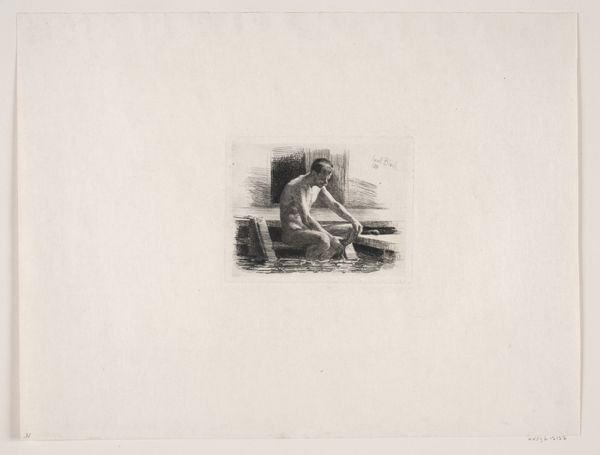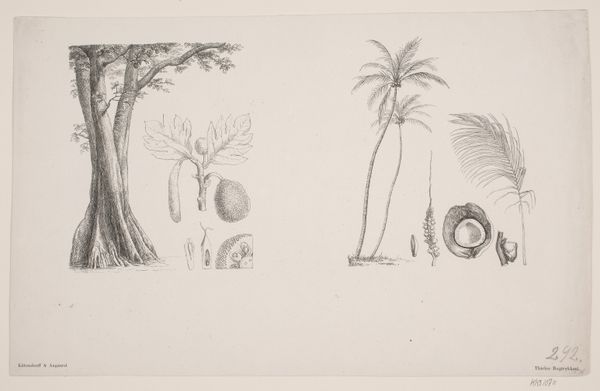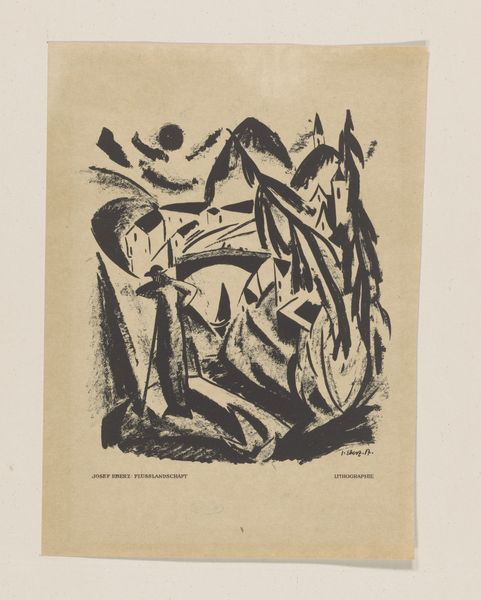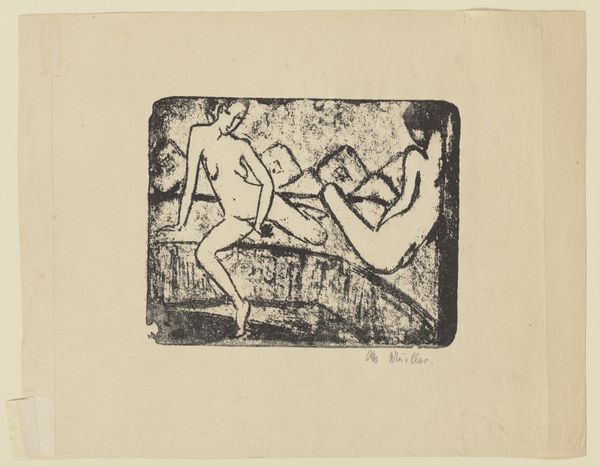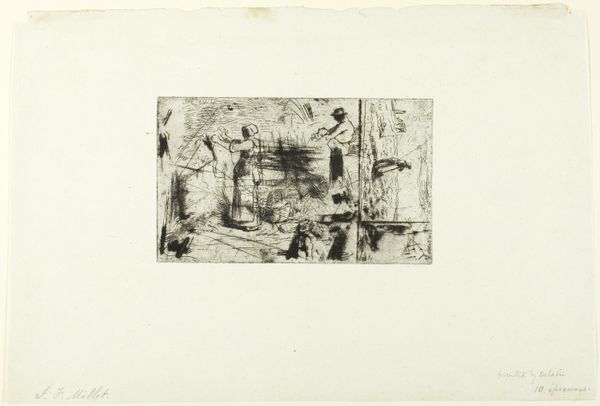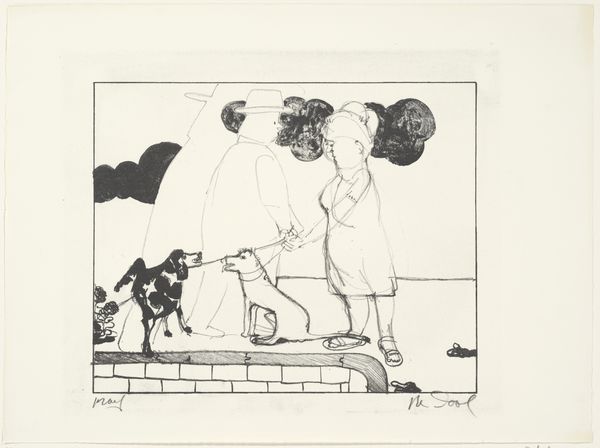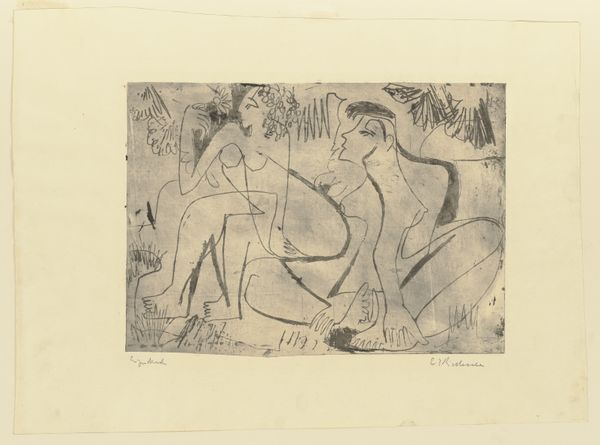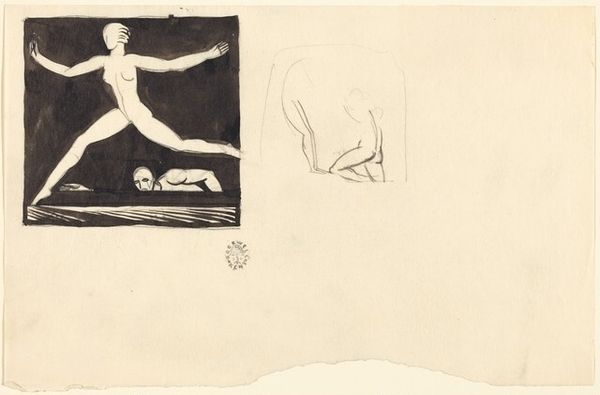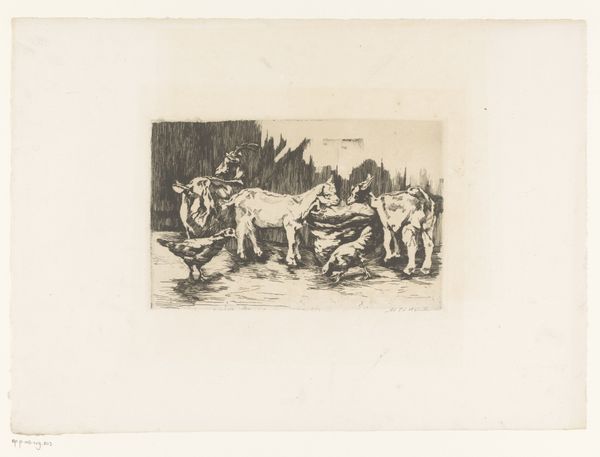
drawing, print, etching, paper, sculpture
#
drawing
# print
#
etching
#
etching
#
paper
#
sculpture
#
symbolism
#
nude
#
monochrome
Dimensions: 125 × 180 mm (image); 136 × 190 mm (plate); 265 × 328 mm (sheet)
Copyright: Public Domain
Editor: This etching by Edvard Munch, "Interior with Sculptures," made in 1902, feels oddly theatrical, like a stage set with sculptures as the players. What do you see in this piece that maybe I’m missing? Curator: It's intriguing to consider this through a materialist lens. What was the nature of artistic labor at the turn of the century? The use of etching as a reproductive technique, but also as a way to directly engage with material - the copper plate, the acid...this suggests an investigation of not just image making, but production itself. What does it tell us about the industrial processes influencing artmaking at this time? Editor: So, beyond the image itself, you’re focused on how the image came to be, the materials and processes that shaped it? Curator: Precisely. Consider the "interior" depicted. Are those sculptures commodities, expressions of the artist’s genius, or both? How did the increasing accessibility of art supplies, driven by industrial manufacturing, alter the artistic landscape and, more fundamentally, influence the very content being created? Does the use of readily available industrial etching materials impact our interpretation? Editor: That's a fascinating perspective. It shifts the focus from the symbolic content of the sculptures to the social and economic context of their creation and reproduction. Curator: Absolutely. The lines on the etching are so rough, emphasizing its reproducibility in ways oil on canvas would not. This is a Symbolist artist engaging with, and perhaps critiquing, the rise of mass culture and new markets for art. Editor: I see the point now. Focusing on the materials and process opens up a whole new understanding of Munch’s intentions and the work's relationship to its time. Thank you! Curator: It goes both ways. Considering the context of material production can only ever inform art understanding.
Comments
No comments
Be the first to comment and join the conversation on the ultimate creative platform.



